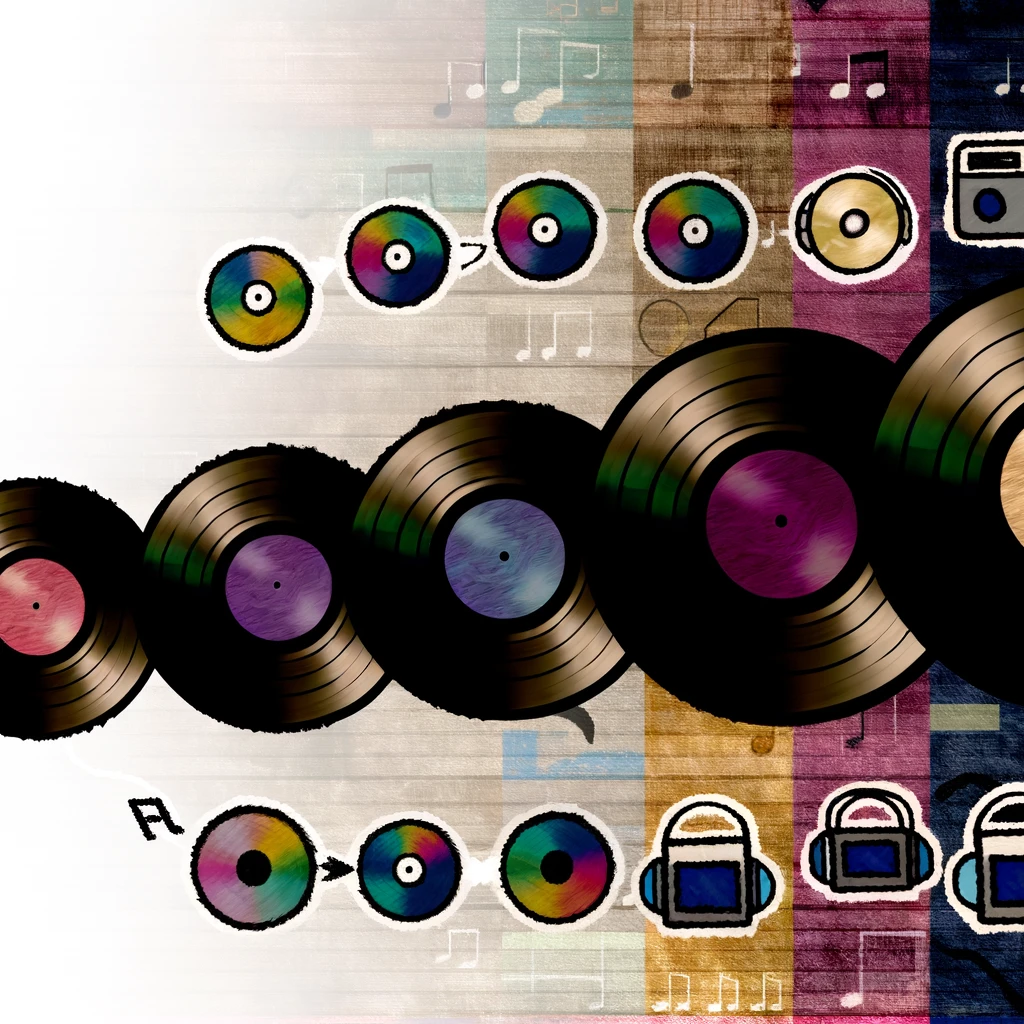
The Evolution of Music Formats
Music consumption has undergone a remarkable journey, transitioning from the tactile pleasure of vinyl records to the digital ease of streaming. This transformation has not only changed how we listen to music but also significantly impacted the music industry as a whole.
The Era of Vinyl
Vinyl records, with their distinct analog sound, were the predominant format for music lovers throughout much of the 20th century. The ritual of playing a vinyl record involved a tactile interaction that added to the listening experience. Collectors cherished the album cover art, liner notes, and the warm sound quality that only vinyl could provide.
The Advent of Digital Music
With the invention of Compact Discs (CDs) in the 1980s, the digital era of music began. CDs were more durable and portable than vinyl, offering clearer sound quality. However, the true revolution came with the rise of the internet and digital music files. The MP3 format allowed users to store thousands of songs on a single device, leading to the decline of physical media.
Impact of Streaming Services
In the past decade, streaming services such as Spotify, Apple Music, and YouTube have become the primary mode of music consumption. These platforms offer vast libraries of music accessible instantly from any device, fundamentally changing how people discover and listen to music.
Benefits for Consumers
Streaming services have democratized access to music. Listeners can now explore genres and artists from around the world with minimal effort and cost. Features like personalized playlists and algorithm-driven recommendations enhance the user experience, making it easier than ever to discover new music.
Challenges for Artists
While streaming has broadened audiences, it has also introduced challenges for artists. Revenue models based on streaming royalties often result in lower earnings for musicians compared to traditional sales. This shift has forced many artists to rethink their income strategies, focusing more on live performances, merchandise, and direct fan engagement.
The Role of Technology
Technological advancements have played a crucial role in this transformation. High-speed internet, mobile devices, and cloud computing have all contributed to the seamless delivery of digital music. Additionally, the rise of social media platforms has provided artists with new avenues for promotion and fan interaction.
Future Trends
As technology continues to evolve, so too will music consumption. Emerging trends such as virtual reality concerts and blockchain technology for music rights management hold the potential to further reshape the industry. The continued integration of artificial intelligence in music recommendations and creation also promises to bring about new innovations.
Conclusion
The transformation from vinyl to digital music consumption reflects broader changes in technology and society. While the medium has changed, the core passion for music remains. As we look to the future, the music industry will continue to adapt to new technologies and consumer preferences, ensuring that music remains an integral part of our lives.
Related Articles





